(Header) Architip is an app used to show archaeological sites how they would have stood when in use. Visual Reconstuction for me is the most useful aspect of virtual archaeology.
The fifth practical workshop was Virtual Reality (3D Reconstructions) in Archaeology. This entailed the reconstruction of the Cat’s Brain Neolithic Building Excavated by Jim Leary using Sketchup from a basic archaeological plan.
The act of recreating and modelling landscapes, excavations, buildings, cities, people and environments shows a huge progression from 2D archaeological maps (Bruno et al. 2010).
For me it really is the next big revolution in archaeology!
The Reconstruct of the Cat’s Brain Neolithic Building Excavated by Jim Leary using Sketchup from a basic archaeological plan
Credit: University of Reading – School of Archaeology, Geography and Environmental Science – Youtube Channel. Showing the discovery and excavation the Neolithic building we are reconstructing.

An Early Neolithic Timber Farmed Structure in Pewsey Vale – Cat’s Brain (Area 4) :
The Process of Creation:
A Realistic Reconstruction:
As a field archaeologist, my interpretation will focus mainly around the physical archaeology present and my realistic interpretation of it with the raw material available to Neolithic populations, rather than aesthetics of the building. For example, making each wooden post individual according to the archaeological plan realistically not perfectly circular or the documented use of wattle and daub instead of just wood. Like realism of the virtual model of Çatalhöyük in Second Life. (Morgan, 2009)
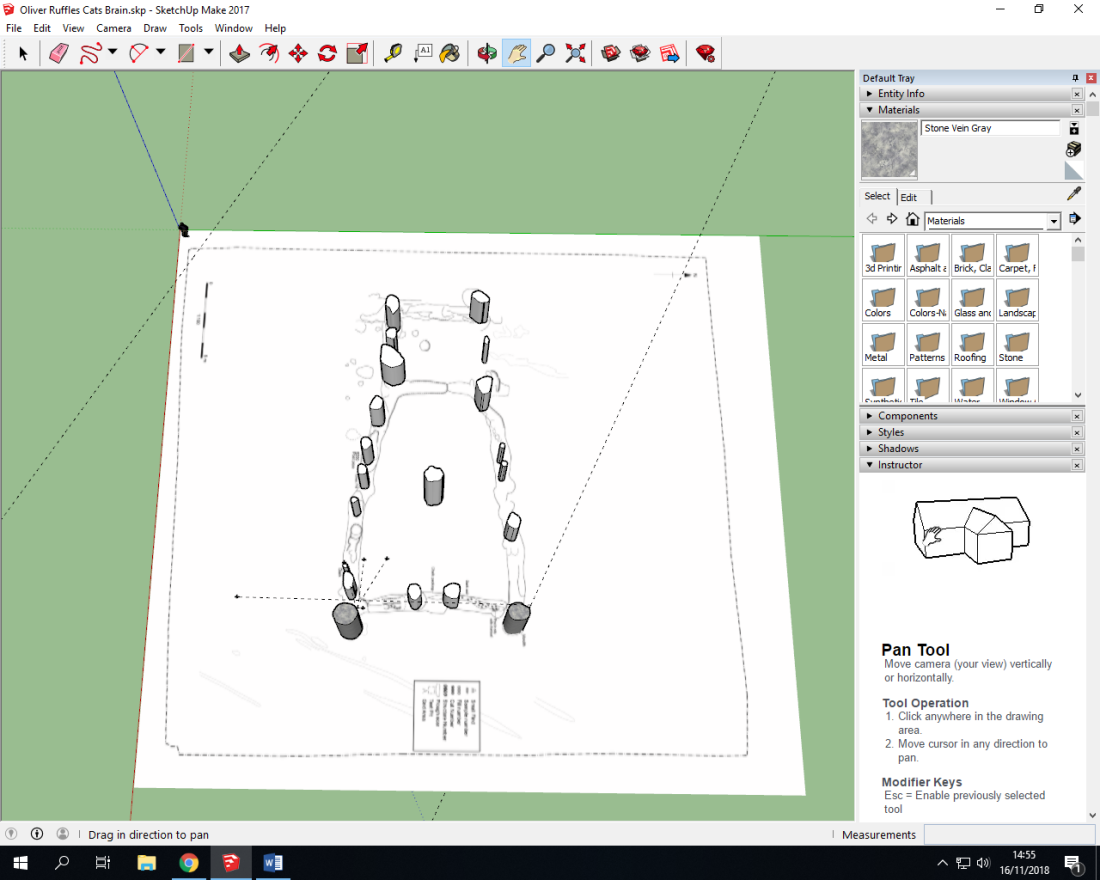

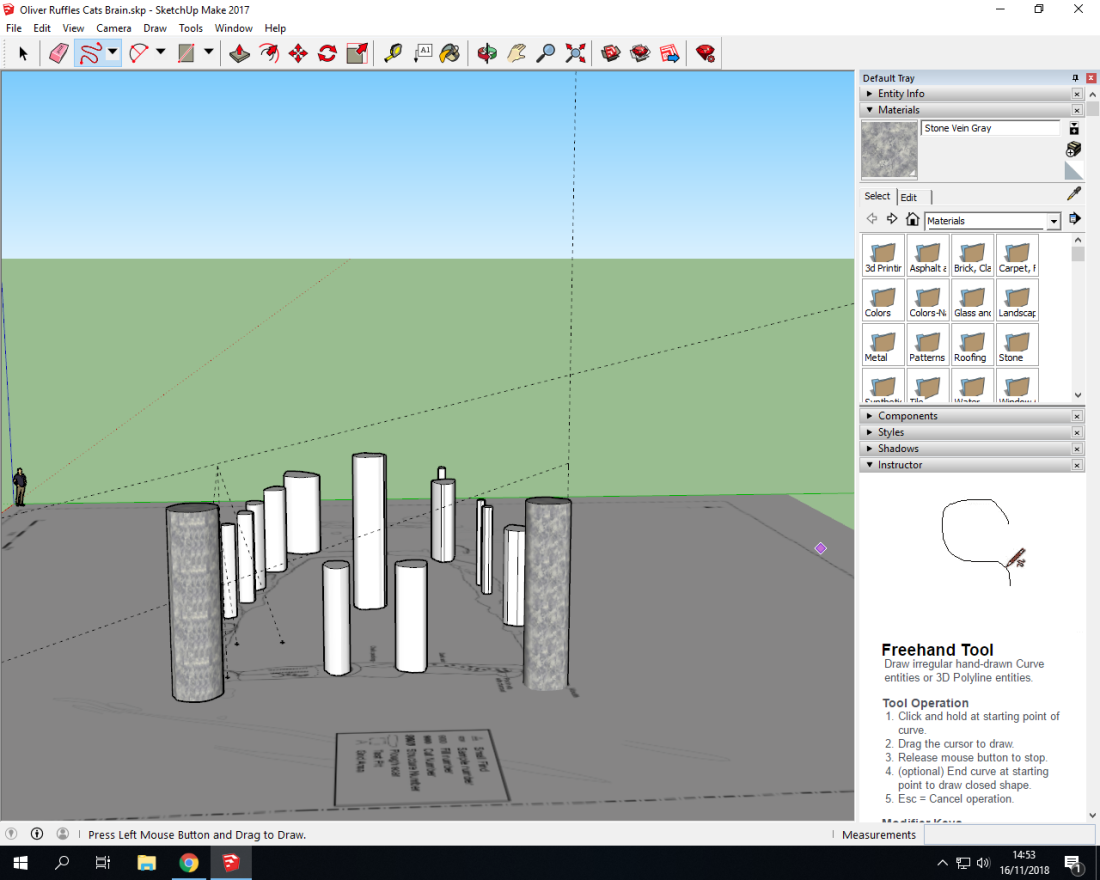
With hindsight, I would have made the posts regressing in height from the monoliths as part on my archaeological inference as the post-holes start far apart and gradually get closer.
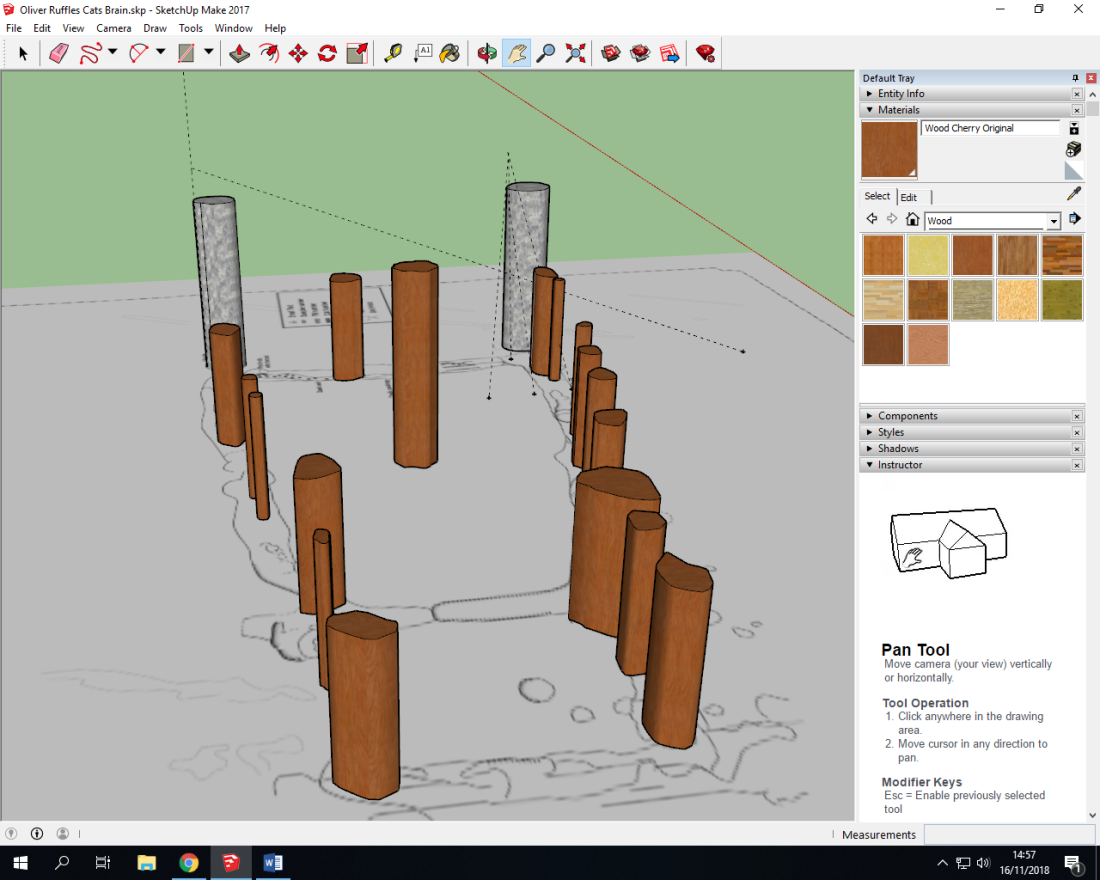
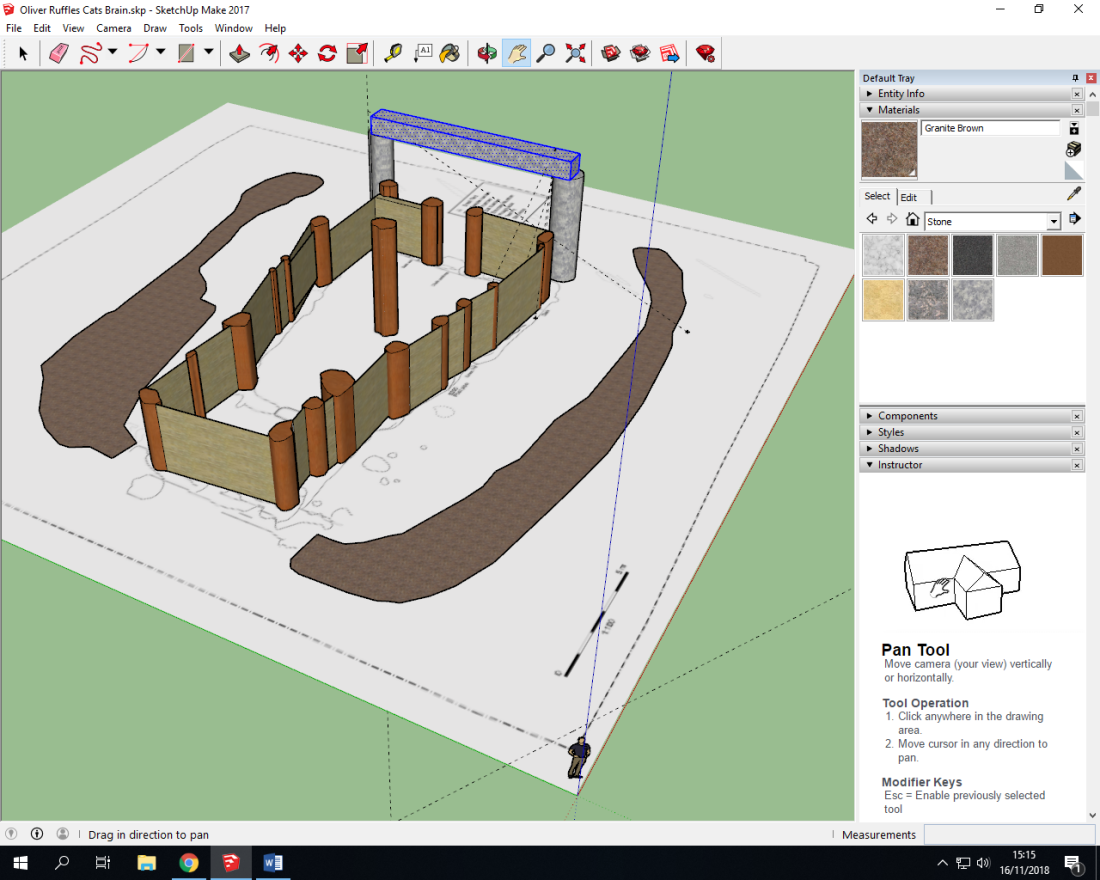



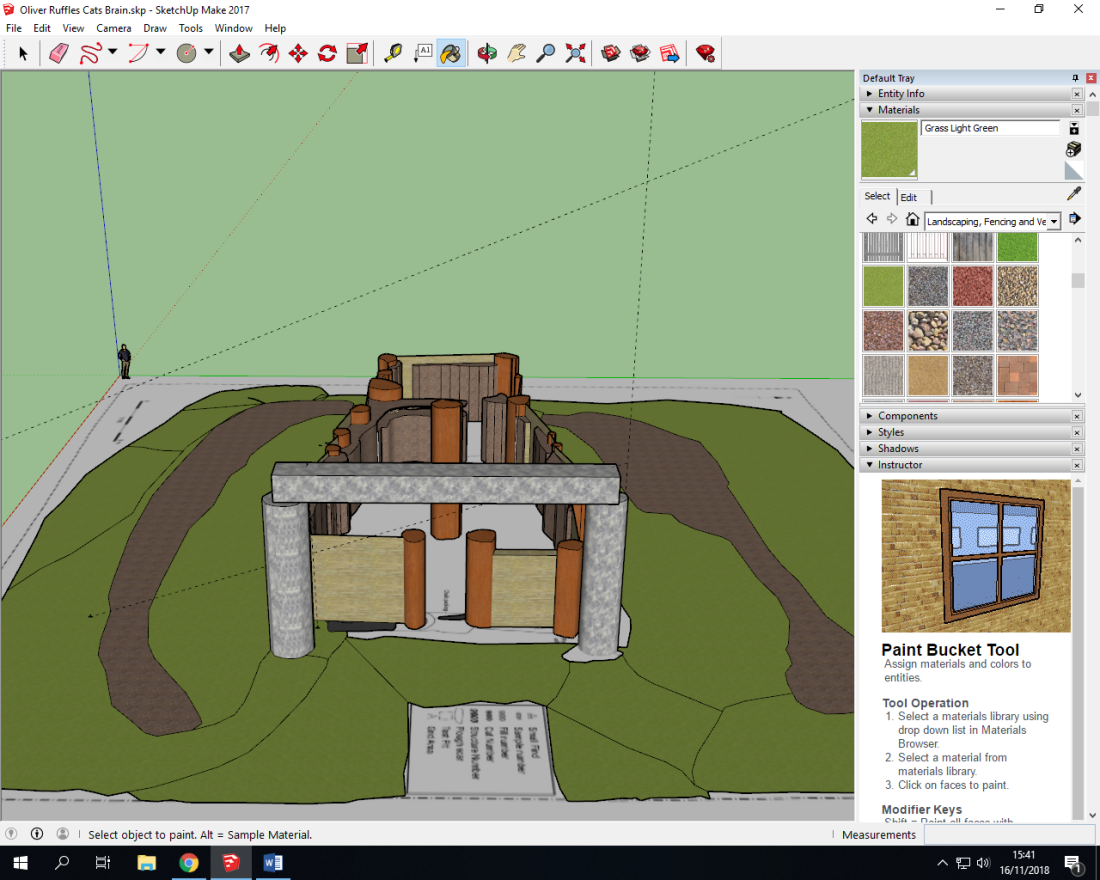
(Process Screen-Shots Credit: Author)
This type of reconstruction could be used in any presentation of how the site would have appeared with archaeological backing behind it.
Limitations of the reconstruction….
- Timber or Turf roof?
- Lintel absence in the archaeological record?
- Archaeology damaged by agriculture
- Destroyed structure – burnt down intentionally? Evidence for ritual? Then covered in mud from surrounding ditch made into a long-barrow.
Other forms of Virtual Reality in Archaeology…

Play it here…
3D Scans of the new trenches 8/9 opened in 2017 fieldwork at Malton Roman Fort 2018.


References
- Frankland, T., 2012. A CG Artist’s Impression: Depicting Virtual Reconstructions Using Non-photorealistic Rendering Techniques. In A. Chrysanthi, P. Murrieta Flores, & C. Papadopoulos, eds. Thinking Beyond the Tool: Archaeological Computing and the Interpretive Process. Oxford: BAR International Series 2344, pp. 24–39
- Morgan, C.L., 2009. (Re)Building Çatalhöyük: Changing Virtual Reality in Archaeology. Archaeologies, 5(3), pp.468–487.
- Copplestone, T. 2017. Designing and Developing a Playful Past in Video Games, in The Interactive Past pp. 85-97
- https://www.timesofisrael.com/seeing-things-as-they-were-theres-an-israeli-app-for-that/
- https://derventiobrigantum.wordpress.com/2017/05/12/how-long-would-you-survive-in-roman-malton/
- Word Count: 549